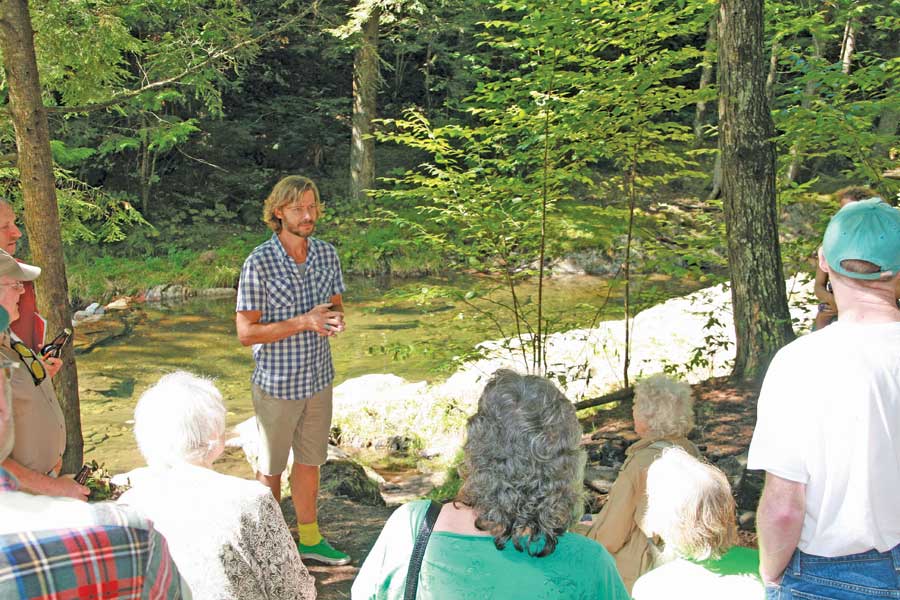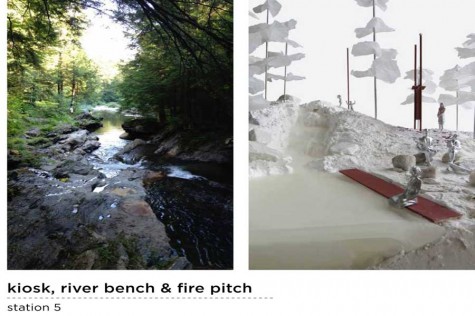Fundraising successful at Journey’s End
Michael Mahnke addresses attendees at the Sept. 7 gathering
The local swimming hole Journey’s End has received a lot of attention lately. The swimming hole and surrounding area are naturally beautiful and inspire many local artists.
They also serve as an important resource for many different animals all year long. Whitetail deer and mink use the surrounding forest for feeding. Brook trout use the Lamoille tributary, Footbrook, as a nursery, because of its clean, clear and cold water.
This year, the town of Johnson and the River Conservancy of Vermont raised enough money to purchase the 25 acres of land on which Journey’s End sits.
People gathered on Sunday, Sept. 7 at Journey’s End to thank those who made the purchase of the land possible, and to discuss what the town will do with the land.
People like Michael Mahnke have voiced interest in creating a trail to Journey’s End that will incorporate natural art installations.
The town has allowed Mahnke, and others, to oversee the trail-building and incorporate their own ideas into the project.
“We started thinking about how, once the land is in the town’s hands, we would need to create points along the trail that will make it both clearer and safer,” said Mahnke. “Then the idea, as we discussed it more, seemed like an opportunity to do something artistic in terms of lines, seating and kiosk that doesn’t take away from nature.”
Once Mahnke received the go-ahead from the town, he asked his friend Julian Van Schulenberg for help with the project.
Schulenberg is a Brooklyn-based architec. He helped mold Mahnke’s ideas into physical models, which were presented at the gathering on Sept. 7.
“The suggested material of construction for the structures is northern white cedar wood, a local building material ideal for the slender and long proportions of the poles,” Schulenberg explained. “Inspired by Vermont’s red wooden bridges, the proposed finish for the structures is iron-infused red paint that produces a patina over time. To avoid the use of concrete, large local stones act as foundations or bearings for the structures. A small solar-powered red light is attached at a high point of each structure to create continuity and magic when walking the trail from station to station at dusk. The path itself is reinforced with perpendicular wood paver boards on a gravel bed.”
The town of Johnson has approved Michael Mahnke and his father-in-law Eric Nuse to become the stewards of the land.
“We’re going to team up with the Vermont Studio Center to incorporate as much art as we can into the trail building,” Nuse said.
“Our main goal is to enhance the natural beauty of the trail. The property itself speaks volumes about the project. Vermont is a small state, and yet somehow we are able to get combinations of public and private land to make things like this possible. You don’t see that everywhere, and it’s amazing Vermont can do that.”
Max Van Wie joined the Basement Medicine staff in Spring 2014, assuming the position of staff reporter.




